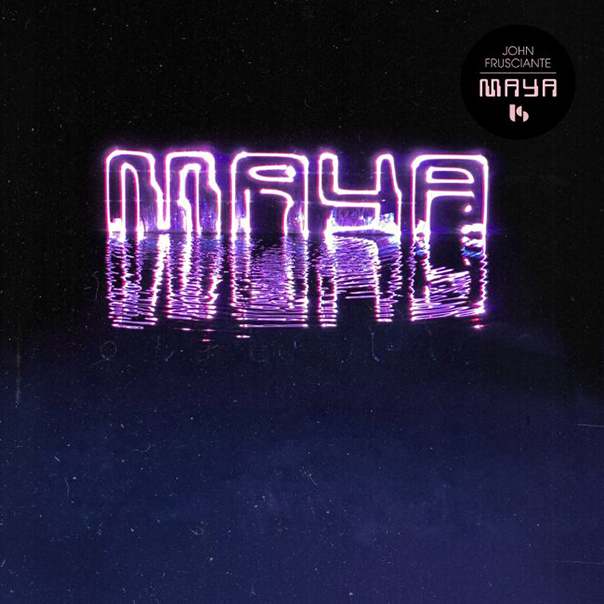REVIEW: John Frusciante exploratory, wondrous on electronic ‘Maya’

John Frusciante is a musician’s musician. Since his early days, making his name as a bad-boy funk guitarist, he has worked solo and with a wide variety of artists. His projects under a handful of styles include Ataxia and Trickfinger. Prolific and experimental, the three-time Red Hot Chili Pepper has dedicated himself to his craft in a way few high-profile guitarists can parallel.
Maya
John Frusciante
Timesig, Oct. 23
7/10
Frusciante enjoys enough name recognition that he could get by on a fresh slate of inoffensive ballads every five years. But to do so would suppress his idiosyncratic musical nature. A current promo photo depicts the 50-year-old sporting a high-end T-shirt featuring artwork from Genesis’ Foxtrot, overlooking a classic L.A. vista. The image captures an essence John Frusciante has pursued diligently since emerging from his dark period in the mid-’90s. In the land of stars and sensation, he remains visible and unpredictable, proudly repping a stuffy English prog-rock band.
Thus cementing his status as the cool Chili Pepper, Frusciante continues to explore a widening palette. Maya is a further foray into electronica, a direction he began in earnest on 2014’s Enclosure, and indulged more thoroughly on Trickfinger’s acid-house albums.
By wading further into electronic music, Frusciante takes a risk. The gamble is not so much about alienating fans, who are prepared to respect the man’s weirdness. He instead runs the risk of being mediocre at someone else’s game, like when Shaquille O’Neal decides to try his hand at acting (not even “Uncle Drew” was very good, sorry). To fail this test would be to take an uncharitable view of the melodic Enclosure.

John Frusciante in a Genesis T-shirt photographed in the hills near the Griffith Observatory in Los Angeles. Courtesy photo.
Happily, Maya moves strongly in its own direction. Songs form as compact, dense capsules of 3-D mapped sound. The noise scheme is lifted faithfully from Chrome and the Detroit techno scene. Legend has it, Maya is a concept album about Frusciante’s eponymous cat, who lived to be 15. As a soundtrack to living instinctually in a digitized world, the record works.
The choice to go instrumental strengthens the spacey wonder of the experiment. This allows Frusciante to fill every sonic space with atonal soundbites, manipulated multi-directionally via a number of effects. The Kraftwerk-esque intro to “Blind Aim” gives way to waves of warm energy rippling through space. A polyrhythmic, lo-fi techno jam and some business-class synths ensue. The fast sections echo the tension of constantly responding to rapidly changing stimuli. It’s a big improvement over the accessibility of Enclosure.
Clues to the new direction on Maya are available in the song titles, at odds with any immediate concept. Alien phrases like “Usbrup Pensul” and “Amethblowl”—singles no less—read like undiscovered constellations or products of a brain-damaged scrabble session. Weirdness seethes, and apart from a few scattered samples and wordless cries, no vocals intrude to clarify matters.
“Flying,” another active exploration, is anchored by a simple minor-third riff and major emphasis on the root. Atari-like space lasers take over for a chill, cruising post-phase. “Anja Motherless,” the longest track, seems to revel in elegant visuals. “Brand E” begins with sedated synth and builds to stripped-down breakbeats and ’80s movie emotional pitch. The song also features some of the album’s best sounds and an increasingly intensifying arc.
Overall, the album makes for a cool listening experience. The machine noises are varied enough not to grate, and interesting rhythmic turns abound. Far from a traditional songwriting paradigm, the record finds John Frusciante in fine form.
That’s good, as the artist has more work to do. Maya and the experiments leading up to it presage Frusciante’s third act with Red Hot Chili Peppers. Pandemic or no, Frusciante has kept a low profile and kept busy.
